What do you need to know before choosing a brush?

The brush is an essential tool in any successful painting as it is an extension of the artist’s hand. A good understanding of a brush’s properties and characteristics will go a long way towards helping you use it correctly. The larger a brush is, the more material it will absorb.
-
A bit of vocabulary
-
Synthetic fibres or natural bristles?
-
What shape brush should you choose?
-
How should you care for your brushes?
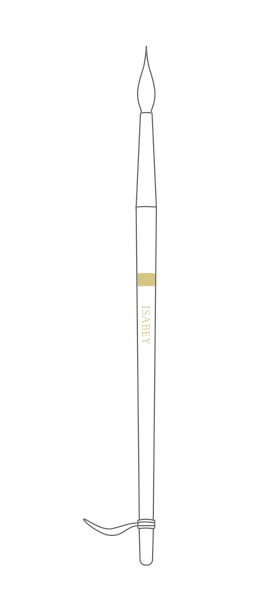
Lexicon
The tip : the slender extremity of fine bristle or hair. This is the first absorption point of the material. It is the extremity of the bristle or hair that dictates how much paint is absorbed. Fine bristles have one single extremity. Hog bristles, however, have multiple extremities, as their tip is divided into several sections.
The belly : serves to hold colour in the bristles. The belly is also referred to as the reserve. This part ensures that your paint is released in a progressive, uniform manner when the brush touches the surface on which you are painting. The better the quality of the brush, the better the final result.
The ferrule : the metallic part in copper or brass: encases the bristles and provides their attachment point. Connects the handle and the brush head. For some types of production (colour wash), the ferrule can be replaced by a quill.
Le handle : A short handle or a long handle?
The length of the handle allows the artist to decide how much distance they want between themselves and their work. For watercolours, we recommend a short handle for precision work and work done on a table. For acrylics and oils: both types are possible depending on the artist’s preference.
The main difference between the two is that long-handled brushes are mainly intended for work at an easel, where one stays at a certain distance from the painting.
Synthetic fibres or natural hairs ?

Brush behaviour out of water
From left to right :
Grey squirrel, Sable, Synthetic fibre
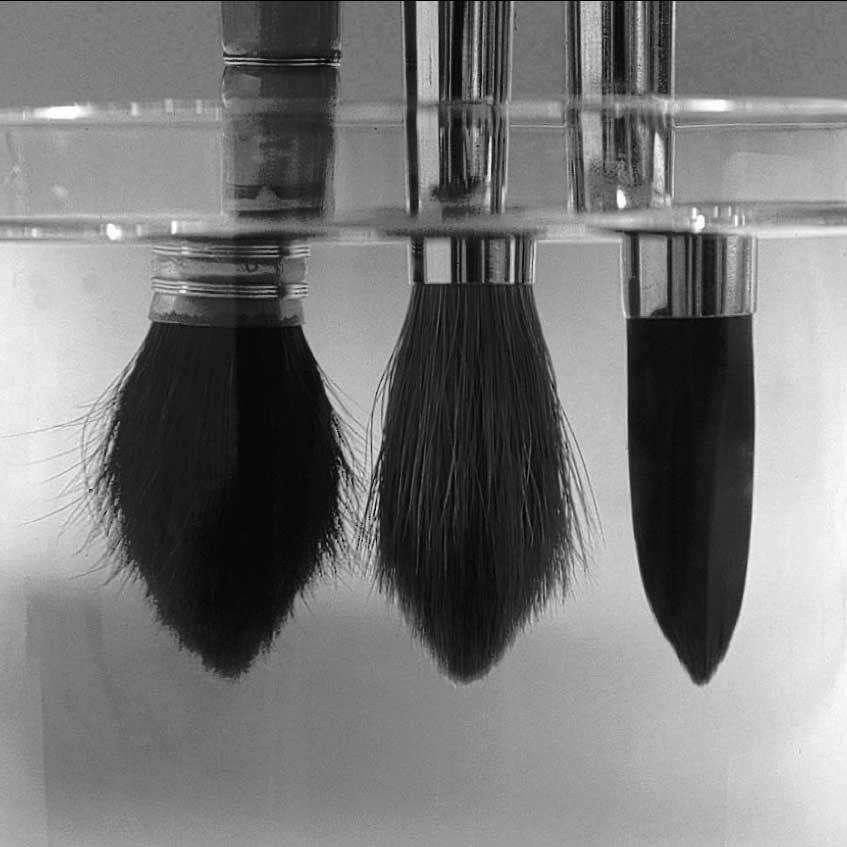
Brush behaviour in water
From left to right :
Grey squirrel, Sable, Synthetic fibre

Made from natural, synthetic or mixed fibres, which each offer specific properties depending on their origin in terms of their water retention capacity, flexibility, spring and resistance to use.
Natural bristles have scales which naturally absorb and hold liquids. This makes them water and colour retentive.
Synthetic hairs are also conical but their surface is smoother. They are more resistant to use, but are less retentive. However, some imitations and/or combinations tend to meet the needs of many artists today.
View of scales through an electronic microscope

Bristles
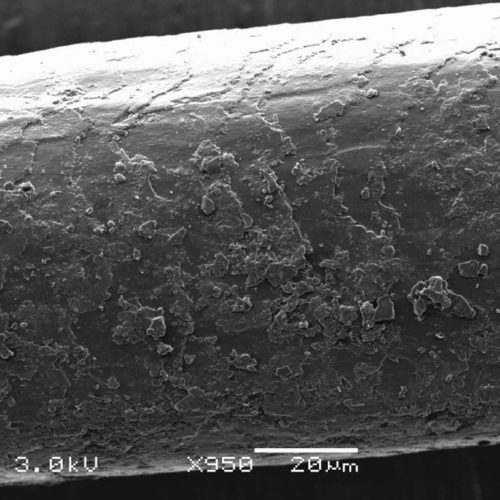
Grey Squirrel
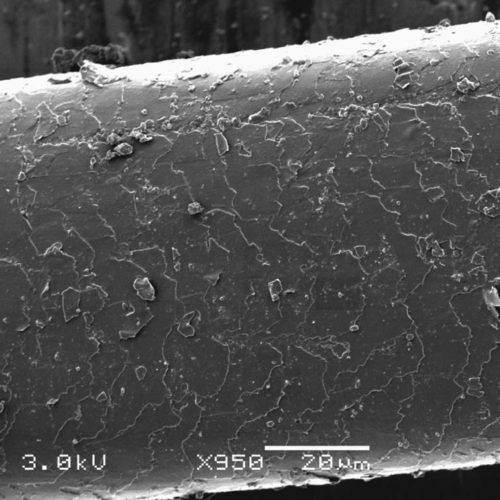
Sable
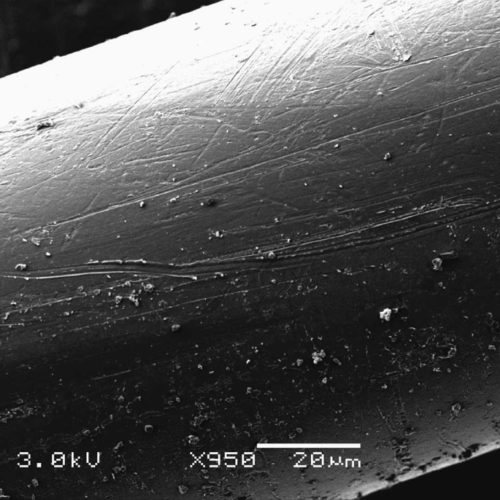
Synthetic fibre
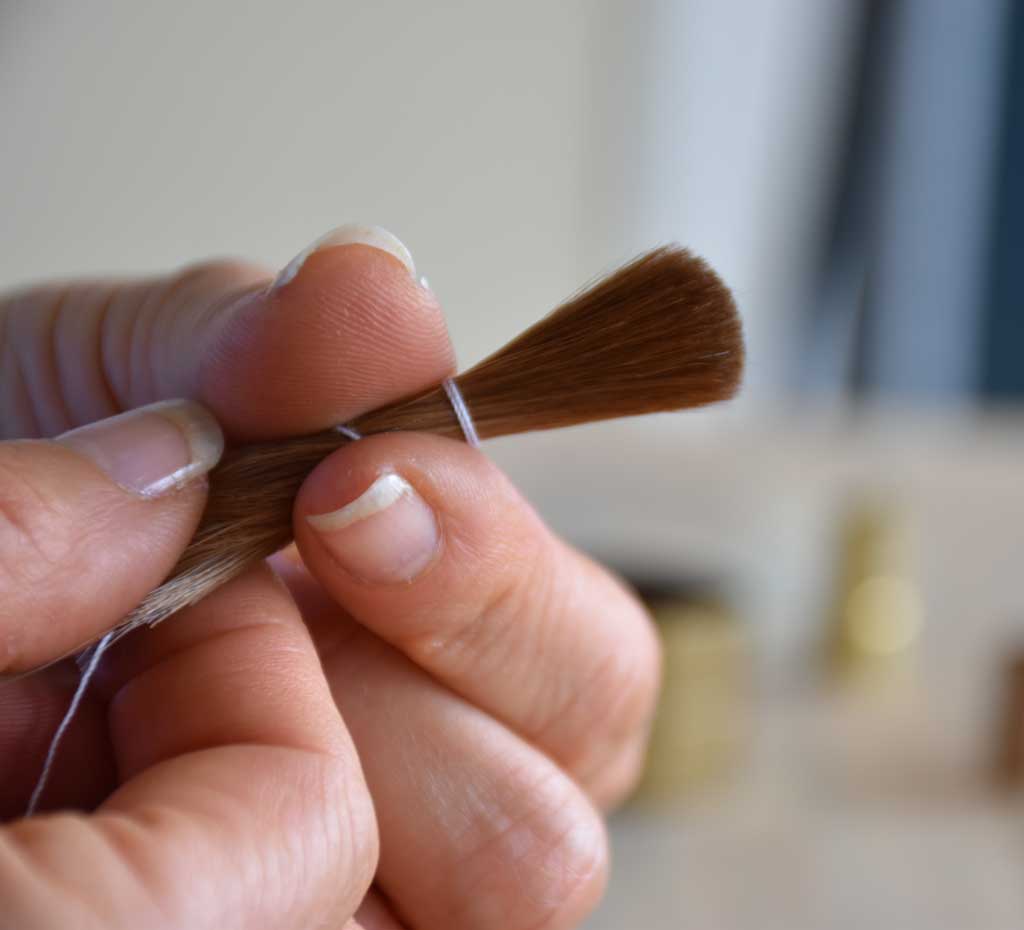
What shape brush ?
Note: All Isabey brushes are shaped exclusively during assembly, without subsequent cutting, in order to respect the natural qualities and finesse of the bristles and hairs used.
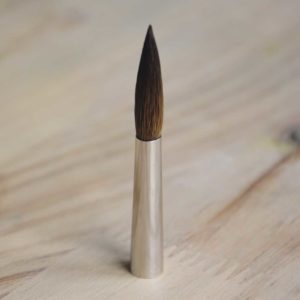
– WATERCOLOUR –

Extra-short
for touch-ups
and retouches

Extra fine point
for fine lines, details
and precise works

Long Point Fine Belly
For lettering, fine details
and precise works

Fine Point Full Belly
for details, contours,
touch-ups

Rigger or Liner
for lettering,
fine long strokes

Pointed Quill Mop
for wash
and details

Pointed Oval Skywash
for washes and
solid backgrounds

Flat
for washes
and solid backgrounds
– OIL and ACRYLIC –

Bright Short Flat
small areas and
more visible strokes

Flat Long
For solid backgrounds
and dilutions

Round
for details
and contours

Filbert
For models, touch-ups
and glazing

Almond Short Filbert
for models,
touch-ups

Cat’s Tongue
for washes
and solid backsgrounds

Interlocked
for backgrounds, washes
precise contours

Fan
for blending, fading
and glazing
– DECORATIVE ARTS –

Angular
for solids
and upstrokes

Fan
for special effects
and dry shading

Pointed Quill mop
for solid backgrounds, washes,
general use

Angular
for background effects

Stripper
for fine lines,
hairs

Extra Short Flat
for finishes,
visible strokes

Round
for details,
touch-ups, finishes

Short Liner
for decors, fine lines
and calligraphy

Long Liner
for decors,
continuous fine lines

Short Flat
for small areas,
more visible strokes

Long Flat
for backgrounds
and varnishes

Filbert
for rounded shapes,
fused touches
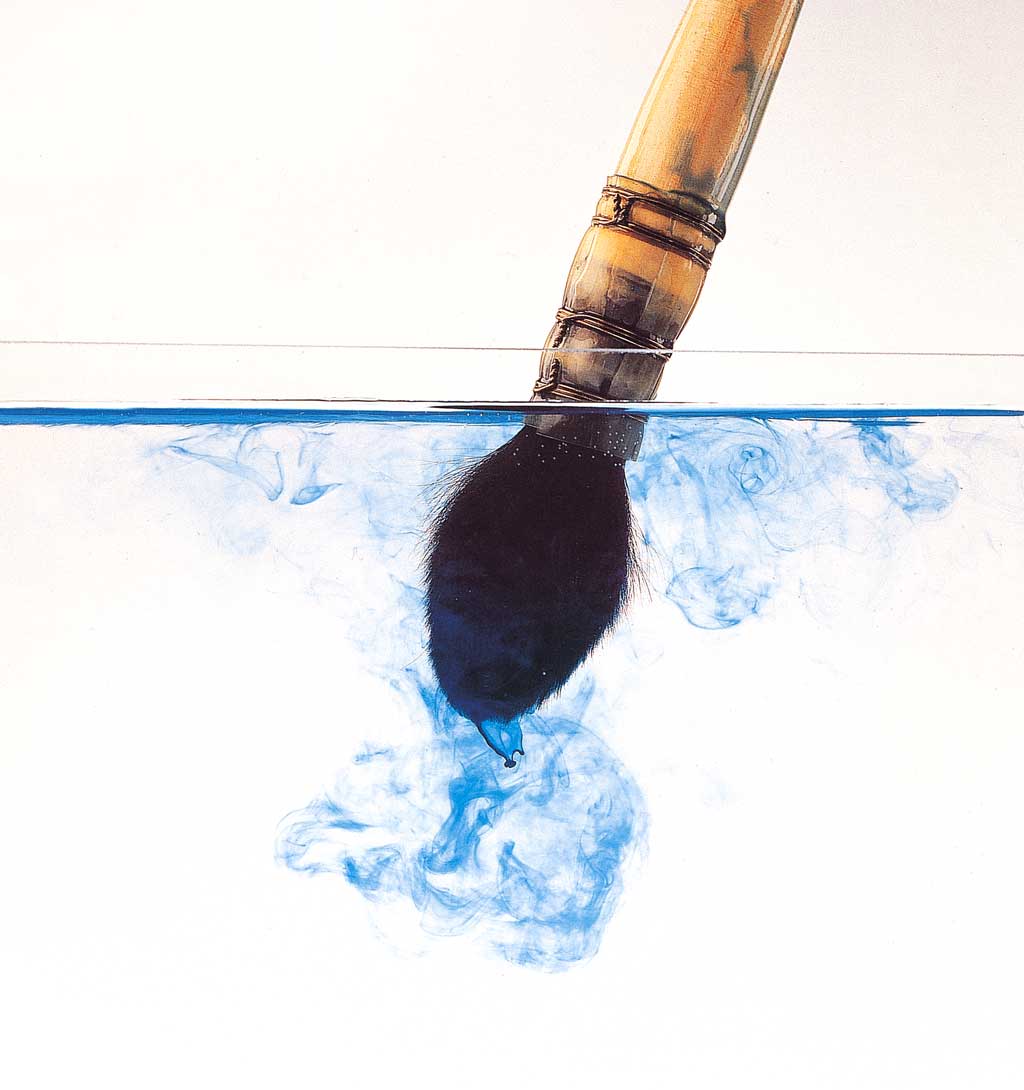
How should I look after my brush?
It is essential to look after your brush carefully to extend its lifespan and preserve its properties.
The main rule is to ensure that all paint residue that could become encrusted in the ferrule is removed because it can cause bristles to break.
For water-based colours (watercolours and gouache): rinse the brush in warm water and soap until all traces of colour have disappeared. Dry the brush horizontally or Hang the brush vertically with the bristles facing downward
For oil colours: with a cloth, wipe the brush from the ferrule to the tip to remove excess colour, clean the brush carefully in a suitable solvent (turpentine or brush-cleaning liquid)
For acrylic colours: as you work, immerse the brush in water once you have finished applying colour as acrylic dries and hardens very quickly. To clean, rinse the brush thoroughly under running water, wash with soap until the soap lather is clean.
